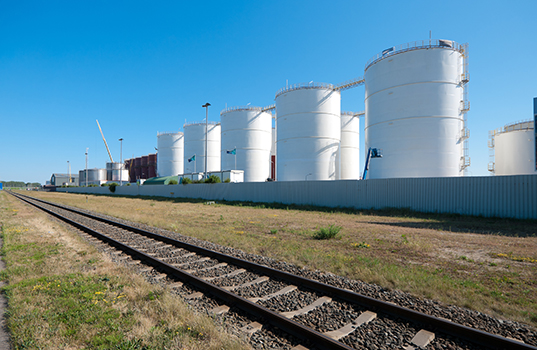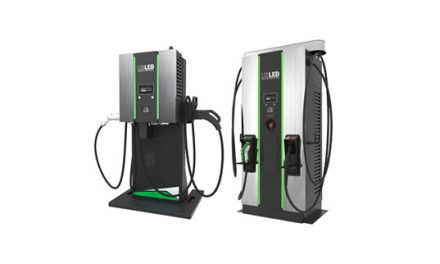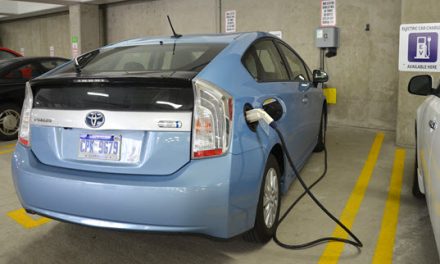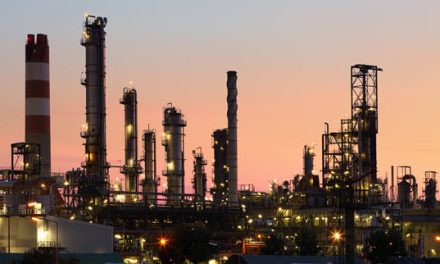By Keith Reid
The 1990s saw the launch of one of infomercial entrepreneur Ron Popeil’s top products, the Showtime Rotisserie. The homeowner could easily cook rotisserie chicken, or beef or lamb roast. The tag line, repeated numerous times by Ron and the audience, rolls off the tongue if you are of a certain age: “Set it and forget it!”
All too often that tag line can apply to fuel bulk plant operators. The tanks are often ASTs with less intrusive monitoring requirements. The equipment tends to have industrial-level reliability. The operations tend to be low-impact, and in many cases the sites are unattended. And yet, as the years go by technology does advance, and foregoing potential upgrades can be costly.
“With most of these bulk plants, it goes from generation to generation,” said Mark Savage, owner, Savage Associates Inc. The firm has been a leader in providing liquid and gas transfer equipment and systems to the petroleum, chemical and industrial markets since 1948. “This pump will last forever—I don’t have to do anything to it. This meter will last forever. Well, as we all know, that’s not true as time goes on. And that meter has been sitting there for 50 years. They just don’t have the parts anymore, and they haven’t had the parts for a good 20 years,” Savage said.
Here we look at some of the areas that might need an upgrade if bulk plants have been in “set and forget” mode for a while.
Terminal Automation
Some tanks, a rack, manual pumps and an unattended support are what comes to mind thinking of the old-time bulk plant. Or many bulk plants operating today, for that matter. While it is not cheap, applying terminal automation technology can provide some notable paybacks. And automation can be applied at different levels.
“It’s a big-time infrastructure change to go into full-time terminal automation,” Savage said. “The larger terminals have got on board, and some of the smaller guys have accepted it, but it has huge upfront costs to do it properly. But it really adds benefits to the site. It is night and day to be able to see everything in real time. We just did a plant up in Massachusetts that was as old school as you can get—still using typewriters, old bill of lading slid under the door. They did not want to upgrade.”
Savage noted the new owner’s son came in and upgraded everything with electronics, as well as new meters and pumps. “Everything that could be replaced or needed to be replaced was replaced, and we went with full terminal automation,” Savage said. “He can see everything at a moment’s notice and feels so relaxed right now.”
Inventory management has long been a priority on the retail side. The reasons are obvious. The inventory turns over at a high rate, there are the regulatory requirements for underground storage tanks, and the threat of product theft is higher. That does not mean there are not compelling reasons to look at the latest generation inventory technologies that can be applied to bulk storage operations.
“Inventory reconciliation and keeping your inventory as accurate as possible with the newer equipment really impacts the overhead,” Savage said. “It has better accuracy, whether it is a meter or new gauging. The older flute and tape cage type are really analog devices and are not that accurate. Now you get into technology that can give you precise, up-to-the-minute level gauging and it can send it down to an electronic system that records all of this in real time. You could be sitting on a beach down in Miami, in the middle of winter, look at your phone and see exactly the state of your inventory.
Savage noted that it is a big jump, with a lot of trust in electronics. It is a great solution when installed properly, but it can be a headache when it is not. “It’s finding the correct system to put in and working with the correct team,” he said.
New Capabilities
Flexibility is another advantage with upgrading a plant. The industry no longer relies on a few grades of gasoline and on-road and off-road diesel. Ethanol and biodiesel can be blended at virtually any percentage, and a range of additives can be blended to enhance performance or support quality. While splash blending in the truck is a cheaper alternative, pre-blending can produce more reliable product under a broad range of environmental considerations.
“There’s a lot of the new fuel management systems out there that support more and more products,” said Tony Cooper, vice president of construction at Acterra Group Inc. Acterra has provided equipment, manufacturing, consulting and specialized construction services to the fuel, renewable energy, government and fleet industries since 1958. “Some of them go up to 16 products. You can blend straight B100 with No. 2 diesel and make B5 or B20. You can become the rent holder at that point, and work some of the cost savings or get some of the subsidy instead of whoever gives you B99.”
One challenge and opportunity with bulk plant operations has been the ability to take advantage of market opportunities with biofuels. The valves and meters must be able to operate with biofuels without degrading to do the job to get to the correct blend.
“The older meters have a 10:1 turn down, which means for every 100 gallons they could accurately register down to 10 gallons per minute,” Savage said. “A lot of the newer meters have a 50:1 turn down, which makes a huge difference with handling a wide range of biofuels. So, say you have a site in Connecticut that may be servicing New York, Massachusetts—various states in a cluster. Different states have standards for how much bio, and in the future how much renewables. You are going to want to have the flexibility to do B5 for your own customers, but if you are trucking it into New York and they want B30, you can create that blend on the run. You could not do that 10 years ago.”
Basic Infrastructure
Steel is steel, and it has been used to store and move petroleum products since the earliest days of the industry. While change has moved at glacial pace with basic site infrastructure components compared to other areas, that does not mean that new construction or major maintenance-related upgrades don’t bring new efficiencies. That is especially the case when handling biofuels.
“Stainless steel is compatible with just about anything,” said Cooper. “Gas and diesel always used carbon steel, and we’re moving away from that for compatibility with the other products. Everybody always used threaded pipe, and you don’t see that as much anymore. It is all welded pipe and bent pipe where they bend the corners instead of using 90-degree fittings. It cuts down on flow restrictions and improves maintenance in areas that rust and crack.”
Some upgrades are necessitated by changes in common practices. Bottom loading is hardly new at the terminal level, but it is making inroads at the smaller facilities as well.
Safety can also be an issue. Bulk plants are industrial facilities where there is some degree of danger in the process. It is not only a moral obligation to provide a safe working environment, but one that has liability ramifications.
“A lot of the older terminals get away with murder,” Savage said. “I was looking at a site today, and it was an OSHA nightmare. The top loading rack was crumbling. The operator pretty much leaped from the top of this safety enclosure to the truck—no rails or anything. If somebody falls, you are looking at a lawsuit and they were not even considering that. All it takes is a single driver falling and their business is up a creek.”
Maintenance
The reason so many bulk plants sit for decades without any major overhauls is that bulk plant equipment tends to be durable, reliable and repairable. A little bit of effort and it just keep on working.
“There’s always wear and tear and there’s always things that are going to break down,” Cooper said. “But as long as you maintain it, it’s going to last for a long time—20 years maybe.”
After decades of loyal service that can be a problem.
“You do reach the point of no return with a piece of equipment,” Savage said. “With meters, if you’re constantly changing out the rotors the internals start to wear away. It gets to a point where the accuracy is gone. What used to be 0.25% accuracy is up over one, and there’s nothing you can do about it.”
Eventually that equipment can’t be repaired.
“Pretty much anything Neptune, or you have old Marlo pumps—if you see that sitting there and you have a leak, good luck, you’re in trouble. You’re looking at new equipment. Get to it before the point of no return,” said Savage.
Efficiency
In a world where efficiency constantly moves forward, there are opportunities that spill over into bulk plant operations. Energy savings are obvious, as is the opportunity to use less costly equipment.
“A lot of the equipment is much more efficient,” Savage said. “You don’t need the big 30-40 horsepower motors to do the job because the pumps also are much more efficient.”
Efficiency can also translate into operational performance by optimizing an older, more haphazard system, with new equipment.
“You can fill the tank three times quicker with a three-inch line then you can with a smaller inch-and-a-half to two-inch pump,” Cooper said. “So, they can get that stuff done quicker, faster and better.”
So, there are solid reasons to consider upgrading older bulk plants that are still, in a basic sense, as functional as they were decades ago. They play an important role in a fuels marketing operation and deserve the same consideration and respect afforded to other areas like logistics or retail operations (if that is in the mix).
“It’s been a battle that we’ve been fighting forever,” Savage said. “Take care of your bulk plant as you would your home—it’s a huge investment.”





